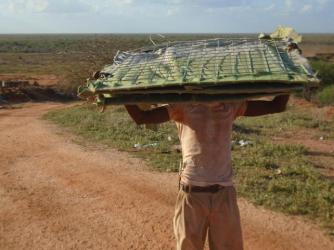Kenyan Elections Today
 National elections in Kenya are today. Finally, there will be answer for who will be victorious in the presidential race between incumbent Uhuru Kenyatta and his perennial challenger in Raila Odinga.
National elections in Kenya are today. Finally, there will be answer for who will be victorious in the presidential race between incumbent Uhuru Kenyatta and his perennial challenger in Raila Odinga.
In 2013, Kenya’s predominately peaceful polls were a welcome rebound after tribal violence led to over 1,000 deaths following the 2007 election. But, the media had already has seemed to label 2017 elections as marred by violence (or inevitably so) even before votes are tallied, based on the sporadic incidents thus far.
While the political rhetoric remains tense, Kenya has come a long way since protests over the composition of the election commission in 2016 led to the deaths of several people and concerns that the government would not be able to hold elections on time.
Countless articles have outlined many of the triggers and signs of violence that will remain on voting day and beyond:
- In a New York Times piece from 6 August, Michela Wrong wrote that many Kenyans are headed out of tribally mixed areas due to fear of ethnic violence;
- Candidates in the Rift Valley, which struggles with drought, have incited certain land-seeking groups to attack landowners as a means to trade support for capturing stolen land in exchange for votes;
- Al-Shabaab has not been a factor in major urban areas during the election season, but has attacked candidates, officials, and civilians in border counties; the group also produced propaganda in multiple languages advising Kenyans not to take part in elections;
- The opposition has alleged that the ruling party has planned to use the military and intelligence agents to rig voting stations and election tallies;
- Since Kenya implemented a devolved system of government that distributes substantial power and wealth to county governments, the stakes for winning local races is much higher than ever before — leading some to believe that candidates will take greater risks to secure a seat;
- The ruling party and opposition dispute the ability of the election commission to accurately tally and transmit votes, particularly in remote areas where communication is more challenging; there are also concerns about whether the electronic voter ID kits will work properly, as many failed during the 2013 election
Clearly, there are a multitude of factors that could discredit the freeness and fairness of the vote. But as 2013 showed, this does not necessarily mean that there will be serious armed conflict.
Somalia: Senior al-Shabaab Leader Killed
On 4 August, the United States announced that a 30 July airstrike killed a senior al-Shabaab commander Ali Muhammad Hussein, aka “Ali Jabal,” near Tortoroow in Lower Shabelle region. As AP noted, the Defense Department is taking advantage of expanded authorities U.S. President Donald Trump has authorized to degree the group’s leadership and capabilities. VOA reporter Harun Maruf summarized Ali Jabal’s role in al-Shabaab which included extorting businesses and directing attacks in Mogadishu.
In mid-July, some reports believed a drone strike had also killed al-Shabaab spokesperson Ali Dheere, but his voice appeared in new audio from the group claiming to have killed 39 Ugandan troops in an ambush outside Mogadishu.
The bigger question is whether U.S. airstrikes can eliminate al-Shabaab leaders and facilitators faster than the group can regenerate its own ranks.
For example, on the same day as the strike on Ali Jabal, there was a car bomb that killed six people and injured thirteen. The next day, an official was killed after a bomb attached to his car was detonated. There were several more car bombs in Mogadishu in the days following the Ali Jabal strike. (See here, here, and here.)
Other notes:
Al-Shabaab and an assortment of civilians scavenged through barracks in Leego abandoned by Ugandan AMISOM troops who vacated the base days earlier.
Ethiopian troops had reportedly been staging to re-take the town, which was previously the site of an al-Shabaab mass attack against a contingent of Burundians in June 2015, but as of this writing there has been no such action in Leego.
In a way, al-Shabaab is having a second bite at the apple, as George Washington University professor Dr. Paul D. Williams points out:
The trend for AMISOM forces to abandon towns unexpectedly combined with Somali forces’ inability to hold major towns independently are bad omens ahead of plans next year for foreign forces to begin a more organized withdrawal.
Categories: Around the Horn, Uncategorized









 Somalia Gets Ventilators, Kenya Mass Tests in Poor Areas, and More East Africa Updates
Somalia Gets Ventilators, Kenya Mass Tests in Poor Areas, and More East Africa Updates
Leave a comment